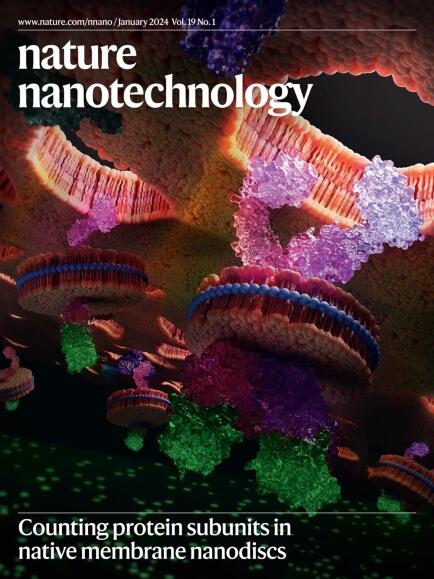双层石墨烯中分数量子霍尔态的阿哈诺夫-玻姆干涉和统计相位跃迁演化
IF 34.9
1区 材料科学
Q1 MATERIALS SCIENCE, MULTIDISCIPLINARY
引用次数: 0
摘要
在分数量子霍尔效应中,准粒子是具有分数电荷的集体激发物,它们在交换位置时会显示分数统计量。虽然分数电荷会影响射出噪声和充电能量等半经典特性,但分数统计通过量子干涉最为显著。在这里,我们研究了双层石墨烯法布里-佩罗干涉仪中的分数统计。对于整数和分数量子霍尔态,我们将干涉仪从库仑主导机制调谐到阿哈诺夫-玻姆机制。我们以填充因子 ν = 1/3 的分数量子霍尔态为重点,在独立改变通过干涉环的磁通量和干涉环内的电荷密度时,跟踪准粒子的阿哈诺夫-玻姆干涉演化。当它们的综合变化使得朗道填充保持 1/3 时,回路中的电荷密度就会连续变化。然后,我们就能观察到周期为三个磁通量子的原始阿哈诺夫-玻姆振荡,这也是三分之一电子电荷的准粒子所期望的。然而,当组合变化导致离散的准粒子添加或移除事件时,就会出现相位跃迁并改变相位演化。值得注意的是,在电荷离散变化和连续变化的所有情况下,每向环路中增加一个电子,平均相位就会持续增加 2π,这符合分数统计对准粒子的预期。本文章由计算机程序翻译,如有差异,请以英文原文为准。


Aharonov–Bohm interference and statistical phase-jump evolution in fractional quantum Hall states in bilayer graphene
In the fractional quantum Hall effect, quasiparticles are collective excitations that have a fractional charge and show fractional statistics as they interchange positions. While the fractional charge affects semi-classical characteristics such as shot noise and charging energies, fractional statistics is most notable through quantum interference. Here we study fractional statistics in a bilayer graphene Fabry–Pérot interferometer. We tune the interferometer from the Coulomb-dominated regime to the Aharonov–Bohm regime, both for integer and fractional quantum Hall states. Focusing on the fractional quantum Hall state with a filling factor ν = 1/3, we follow the evolution of the Aharonov–Bohm interference of quasiparticles while varying the magnetic flux through an interference loop and the charge density within the loop independently. When their combined variation is such that the Landau filling remains 1/3, the charge density in the loop varies continuously. We then observe pristine Aharonov–Bohm oscillations with a period of three flux quanta, as expected for quasiparticles of one-third of the electron charge. Yet, when the combined variation leads to discrete events of quasiparticle addition or removal, phase jumps emerge and alter the phase evolution. Notably, across all cases with discrete and continuous charge variation, the average phase consistently increases by 2π with each addition of one electron to the loop, as expected for quasiparticles, obeying fractional statistics. Electrostatically tunable graphene-based electronic interferometers show non-trivial exchange statistics of quasiparticles, revealing their wave-like properties.
求助全文
通过发布文献求助,成功后即可免费获取论文全文。
去求助
来源期刊

Nature nanotechnology
工程技术-材料科学:综合
CiteScore
59.70
自引率
0.80%
发文量
196
审稿时长
4-8 weeks
期刊介绍:
Nature Nanotechnology is a prestigious journal that publishes high-quality papers in various areas of nanoscience and nanotechnology. The journal focuses on the design, characterization, and production of structures, devices, and systems that manipulate and control materials at atomic, molecular, and macromolecular scales. It encompasses both bottom-up and top-down approaches, as well as their combinations.
Furthermore, Nature Nanotechnology fosters the exchange of ideas among researchers from diverse disciplines such as chemistry, physics, material science, biomedical research, engineering, and more. It promotes collaboration at the forefront of this multidisciplinary field. The journal covers a wide range of topics, from fundamental research in physics, chemistry, and biology, including computational work and simulations, to the development of innovative devices and technologies for various industrial sectors such as information technology, medicine, manufacturing, high-performance materials, energy, and environmental technologies. It includes coverage of organic, inorganic, and hybrid materials.
 求助内容:
求助内容: 应助结果提醒方式:
应助结果提醒方式:


